|
|
- There will be secondary oracular Temple site built on Mt. Hermon/Sion in the northern region of Dan.
For precedents see: I Kings 12:26-32 and Judges 17 above.
For a voice declareth from Dan, and publisheth affliction from mount Ephraim. - Jer. 4:15
"After listening to you say Mt. Hermon was on the 33rd parallel AND 33rd meridian, I got onGoogleEarthand decided to look around the area to see what I could find. (You know, GoogleEarth is satellite pictures of the entire earth, and you can navigate to anywhere you want to go and zoom in on your target.) I was disappointed to find that it was out in the middle of the Mediterranean.
"Sometime later, I heard you say that the area was what is now the Golan Heights. So, I started scanning the area around the 33rd parallel in the Golan Heights area. Then I decided to 'refine' my search, so I scanned around until I was at33° 33' latitude (33° 33')! As I was looking over the terrain from a fairly good height (about 13.5 miles eye altitude), I saw a small white 'dot' below... At that height, it was obvious that it was a very large structure!
"I zoomed in on the white dot, and it looked like a rather large building up on the very top of a mountain, with several roads going around the area. Wow! Then, a few days later as I was re-listening to one of your audios, I heard you say that the ancient longitude was from the Paris meridian, not Greenwich, and that there was a 2.5° difference, which would make the longitude 35.5° instead of 33° on our Greenwich meridian. I eagerly got back on GoogleEarth and found my white "dot" on33° 33' 13"....and would you believe that the longitude was35.5°!
"I feel that this large structure on the 33.33° parallel and the ancient 33° longitude must be a large pagan - Masonic - whatever - temple!" -1106
Click to enlarge photo à
|

|
'Temple' to be built in the north
Eitan Glickman
"A 25-meter-tall (82 feet) replica of Solomon's temple in ancient Jerusalem to be built in northern city of Kiryat Shemoneh. Project will cost 8 million dollars to build, become main feature of city's Bible World amusement park
"Not quite the Third Temple, but close: Entrepreneurs in the northern city of Kiryat Shemoneh are making plans to build a 'Holy Temple' as part of a soon-to-be established Bible World amusement park.
"Like the original in Jerusalem, the model structure will tower over its surroundings, reaching a height of 25 meters (82 feet) and will be an exact replica of Solomon's temple on Jerusalem's Temple Mount, destroyed by the Babylonians in 586 BCE.
"'Time tunnels' will offer descriptions of the different periods of Jewish history, and will lead visitors to the main hall, which will feature murals depicting Biblical stories.
Visitors will also have the opportunity to "meet" three heroes of the Bible: Abraham, Moses and King David.
Is the Bible 'disappearing' from consciousness?
"Overseeing the project is Chabad rabbi of Kiryat Shemoneh, Yigal Tsipori, who toured the site Wednesday with Mayor Chaim Barbibai and other local rabbis.
"'The 'Book of Books,' the cradle of Jewish civilization, is increasingly disappearing from our national consciousness. Limited study is no longer sufficient to attract young people of today to the Bible and its values. Therefore, there is a great need for this initiative,' said Tsipori.
"The 'Temple' will use 3-D movies and other tools to show young people just how things worked in the Holy Temple and just what the priests (Cohanim) did,' he added.
"The park will also feature a Biblical textile mill and wine press, and will host Bar and Bat Mitzvah receptions.
400,000 visitors expected
"The park's founders say they hope to attract 400,000 visitors annually to the park, including local Israeli youths and young people from the Diaspora.
"The project, to be located near the Nehemia Mall in Kiryat Shemoneh, is expected to cost USD 8 million (NIS 38 million) and employ several dozen workers.
"Several donors have already been lined up to fund the project." -1107
Facts and Figures about Kiryat Shemoneh, Israel
Latitude 33.20806
Longitude 35.56861
Latitude (DMS) 33d 12m 29s
Longitude (DMS) 35d 34m 7s - 1108
http://watch.pair.com/new-jerusalem.html
|
|
|
|
|
Éxodo 25
1. Jehová habló a Moisés, diciendo:
2. Di a los hijos de Israel que tomen para mí ofrenda; de todo varón que la diere de su voluntad, de corazón, tomaréis mi ofrenda.
3. Esta es la ofrenda que tomaréis de ellos: oro, plata, cobre,
4. azul, púrpura, carmesí, lino fino, pelo de cabras,
5. pieles de carneros teñidas de rojo, pieles de tejones, madera de acacia,
6. aceite para el alumbrado, especias para el aceite de la unción y para el incienso aromático,
7. piedras de ónice, y piedras de engaste para el efod y para el pectoral.
8. Y harán un santuario para mí, y habitaré en medio de ellos.
9. Conforme a todo lo que yo te muestre, el diseño del tabernáculo, y el diseño de todos sus utensilios, así lo haréis.
10. Harán también un arca de madera de acacia, cuya longitud será de dos codos y medio, su anchura de codo y medio, y su altura de codo y medio.
11. Y la cubrirás de oro puro por dentro y por fuera, y harás sobre ella una cornisa de oro alrededor.
12. Fundirás para ella cuatro anillos de oro, que pondrás en sus cuatro esquinas; dos anillos a un lado de ella, y dos anillos al otro lado.
13. Harás unas varas de madera de acacia, las cuales cubrirás de oro.
14. Y meterás las varas por los anillos a los lados del arca, para llevar el arca con ellas.
15. Las varas quedarán en los anillos del arca; no se quitarán de ella.
16. Y pondrás en el arca el testimonio que yo te daré.
17. Y harás un propiciatorio de oro fino, cuya longitud será de dos codos y medio, y su anchura de codo y medio.
18. Harás también dos querubines de oro; labrados a martillo los harás en los dos extremos del propiciatorio.
19. Harás, pues, un querubín en un extremo, y un querubín en el otro extremo; de una pieza con el propiciatorio harás los querubines en sus dos extremos.
20. Y los querubines extenderán por encima las alas, cubriendo con sus alas el propiciatorio; sus rostros el uno enfrente del otro, mirando al propiciatorio los rostros de los querubines. (25.20)
21. Y pondrás el propiciatorio encima del arca, y en el arca pondrás el testimonio que yo te daré.
22. Y de allí me declararé a ti, y hablaré contigo de sobre el propiciatorio, de entre los dos querubines que están sobre el arca del testimonio, todo lo que yo te mandare para los hijos de Israel.
23. Harás asimismo una mesa de madera de acacia; su longitud será de dos codos, y de un codo su anchura, y su altura de codo y medio.
24. Y la cubrirás de oro puro, y le harás una cornisa de oro alrededor.
25. Le harás también una moldura alrededor, de un palmo menor de anchura, y harás a la moldura una cornisa de oro alrededor.
26. Y le harás cuatro anillos de oro, los cuales pondrás en las cuatro esquinas que corresponden a sus cuatro patas. (EL NUMERO CUATRO ES UNA REFERENCIA AL ESTE-OESTE-NORTE-SUR O A LAS A CUATRO FASES DE LA LUNA O AL MISMO NUMERO PI QUE DEPENDE DE DICHO NUMERO)
27. Los anillos estarán debajo de la moldura, para lugares de las varas para llevar la mesa.
28. Harás las varas de madera de acacia, y las cubrirás de oro, y con ellas será llevada la mesa.
29. Harás también sus platos, sus cucharas, sus cubiertas y sus tazones, con que se libará; de oro fino los harás.
30. Y pondrás sobre la mesa el pan de la proposición delante de mí continuamente.
31. Harás además un candelero de oro puro; labrado a martillo se hará el candelero; su pie, su caña, sus copas, sus manzanas y sus flores, serán de lo mismo.
32. Y saldrán seis brazos de sus lados; tres brazos del candelero a un lado, y tres brazos al otro lado. (TREINTA Y TRES)
33. Tres copas en forma de flor de almendro en un brazo, una manzana y una flor; y tres copas en forma de flor de almendro en otro brazo, una manzana y una flor; así en los seis brazos que salen del candelero; (EXODO 25:33=TREINTA Y TRES=MENORAH= "MAQUINA DEL TIEMPO")
34. y en la caña central del candelero cuatro copas en forma de flor de almendro, sus manzanas y sus flores.
35. Habrá una manzana debajo de dos brazos del mismo, otra manzana debajo de otros dos brazos del mismo, y otra manzana debajo de los otros dos brazos del mismo, así para los seis brazos que salen del candelero.
36. Sus manzanas y sus brazos serán de una pieza, todo ello una pieza labrada a martillo, de oro puro.
37. Y le harás siete lamparillas, las cuales encenderás para que alumbren hacia adelante.
38. También sus despabiladeras y sus platillos, de oro puro.
39. De un talento de oro fino lo harás, con todos estos utensilios.
40. Mira y hazlos conforme al modelo que te ha sido mostrado en el monte.
ES OBVIO EL NEXO CON EL REPOSO EN FUNCION A LAS FASES DE LA LUNA.
|
|
|
|
|
3 Días y 3 Noches, Mateo 28:1
3 Días y 3 Noches, Mateo 28:1
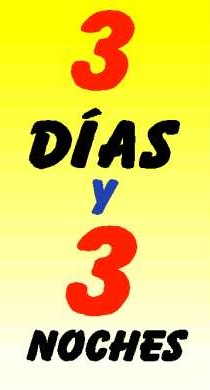
Jesús estaba en el sepulcro tres días y tres noches.
Jesus was in the tomb three days and three nights.
Lectura de la Biblia:
3 días y 3 noches
Después del Sábado, al amanecer del primer Día de la semana, vinieron María Magdalena y la otra María para ver el sepulcro.
El Sábado está en plural en el griego, “Sábados.”
En Mateo 28:1, que habla de las mujeres yendo a la tumba, hay una traducción errónea en español también.
In Matthew 28:1, which speaks of the women coming to the tomb, there is a mistranslation in Spanish.
El texto griego dice claramente, “Despuéas de que los sáabados habíaan pasado,” con sáabados en el plural. Por quéa es significante eso?
In Matthew 28:1, which speaks of the women coming to the tomb, there is a mistranslation in English.
En Mateo 28:1, que habla de las mujeres yendo a la tumba, hay una traducción errónea en inglés [** “and in Spanish, too” = “y en español también.” **]
Mateo 28:1
|
|
|
|
|

cortright.org
Three Days and Three Nights
510 × 299 - 11k - gif |

lifehopeandtruth.com
days and three nights.
472 × 189 - 22k - jpg |

tgm.org
The Hebrews counted "Days"
609 × 604 - 82k - jpg |

herealittletherealittl...
days and three nights in
694 × 209 - 27k - gif |

cgi.org
days and three nights—”An
1000 × 535 - 90k |

ucg.org
and Resurrection - 3
720 × 569 - 94k - jpg |

bibleteacher.co
Therefore Jesus was crucified
500 × 364 - 86k - jpg |

dentonpbc.org
Three Days and Three Nights
696 × 253 - 16k - gif |

visualstorybible.org
days and three nights in
508 × 380 - 21k - jpg |

oocities.org
days and three nights
1768 × 673 - 20k - gif |

preteristarchive.com
Three Days and Three Nights
567 × 255 - 9k - gif |

mmcg.org
PassionTimelineBrief
476 × 350 - 33k - jpg |

oocities.org
been 3 days and 3 nights
1822 × 781 - 25k - gif |

pennys-tuppence.blogsp...
It means three literal days
640 × 233 - 22k - jpg |

hebrew4christians.com
3 Days and 3 Nights
526 × 340 - 10k - gif |

worldwatchtoday.org
days and three nights as
1576 × 2475 - 1244k - jpg |

letgodbetrue.com
3 Days & 3 Nights
760 × 224 - 44k - jpg |

youtube.com
Three Days & Three Nights
480 × 360 - 41k - jpg |

yrm.org
miraculous sign from you.
576 × 328 - 29k - png |

logosapostolic.org
Three days and three nights
515 × 139 - 23k - jpg |
|
|
|
|
|
3 Días y 3 Noches, Mateo 28:1
3 Días y 3 Noches, Mateo 28:1

Jesús estaba en el sepulcro tres días y tres noches.
Jesus was in the tomb three days and three nights.
Lectura de la Biblia:
3 días y 3 noches
Después del Sábado, al amanecer del primer Día de la semana, vinieron María Magdalena y la otra María para ver el sepulcro.
El Sábado está en plural en el griego, “Sábados.”
En Mateo 28:1, que habla de las mujeres yendo a la tumba, hay una traducción errónea en español también.
In Matthew 28:1, which speaks of the women coming to the tomb, there is a mistranslation in Spanish.
El texto griego dice claramente, “Despuéas de que los sáabados habíaan pasado,” con sáabados en el plural. Por quéa es significante eso?
In Matthew 28:1, which speaks of the women coming to the tomb, there is a mistranslation in English.
En Mateo 28:1, que habla de las mujeres yendo a la tumba, hay una traducción errónea en inglés [** “and in Spanish, too” = “y en español también.” **]
Mateo 28:1
|
| Reply |
Message 27 of 27 on the subject |
|

cortright.org
Three Days and Three Nights
510 × 299 - 11k - gif |

lifehopeandtruth.com
days and three nights.
472 × 189 - 22k - jpg |

tgm.org
The Hebrews counted "Days"
609 × 604 - 82k - jpg |

herealittletherealittl...
days and three nights in
694 × 209 - 27k - gif |

cgi.org
days and three nights—”An
1000 × 535 - 90k |

ucg.org
and Resurrection - 3
720 × 569 - 94k - jpg |

bibleteacher.co
Therefore Jesus was crucified
500 × 364 - 86k - jpg |

dentonpbc.org
Three Days and Three Nights
696 × 253 - 16k - gif |

visualstorybible.org
days and three nights in
508 × 380 - 21k - jpg |

oocities.org
days and three nights
1768 × 673 - 20k - gif |

preteristarchive.com
Three Days and Three Nights
567 × 255 - 9k - gif |

mmcg.org
PassionTimelineBrief
476 × 350 - 33k - jpg |

oocities.org
been 3 days and 3 nights
1822 × 781 - 25k - gif |

pennys-tuppence.blogsp...
It means three literal days
640 × 233 - 22k - jpg |

hebrew4christians.com
3 Days and 3 Nights
526 × 340 - 10k - gif |

worldwatchtoday.org
days and three nights as
1576 × 2475 - 1244k - jpg |

letgodbetrue.com
3 Days & 3 Nights
760 × 224 - 44k - jpg |

youtube.com
Three Days & Three Nights
480 × 360 - 41k - jpg |

yrm.org
miraculous sign from you.
576 × 328 - 29k - png |

logosapostolic.org
Three days and three nights
515 × 139 - 23k - jpg |
|
|
|
|
|
|
|

The month of August is upon us once again, bringing with it humid days and sultry nights for North American observers.
You’ll often hear the first few weeks of August referred to as the Dog Days of Summer. Certainly, the oppressive midday heat may make you feel like lounging around in the shade like our canine companions. But did you know there is an astronomical tie-in for the Dog Days as well?
We’ve written extensively about the Dog Days of Summer previously, and how the 1460 year long Sothic Cycle of the ancient Egyptians became attributed to the Greek adoption of Sothis, and later in medieval times to the ‘Dog Star’ Sirius. Like the Blue Moon, say something wrong enough, long enough, and it successfully sticks and enters into meme-bank of popular culture.

Sirius (to the lower right) along with The Moon, Venus and Mercury and a forest fire taken on July 22, 2014. (Note- this was shot from the Coral Towers Observatory in the southern hemisphere). Image credit and copyright: Joseph Brimacombe
A water monopoly empire, the Egyptians livelihood rested on knowing when the annual flooding of the Nile was about to occur. To this end, they relied on the first seasonal spotting of Sirius at dawn. Sirius is the brightest star in the sky, and you can just pick out the flicker of Sirius in early August low to the southeast if you know exactly where to look for it.
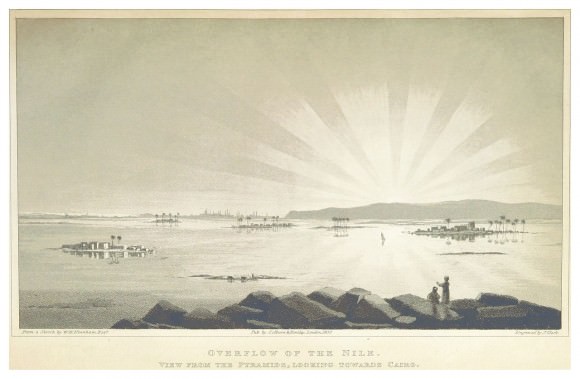
Sundown over Cairo during the annual flooding of the Nile river. Image Credit: Travels through the Crimea, Turkey and Egypt 1825-28 (Public Domain).
Sirius lies at a declination of just under 17 degrees south of the celestial equator. It’s interesting to note that in modern times, the annual flooding of the Nile (prior to the completion of the Aswan Dam in 1970) is commemorated as occurring right around August 15th. Why the discrepancy? Part of it is due to the 26,000 year wobbling of the Earth’s axis known as the Precession of the Equinoxes; also, the Sothic calendar had no intercalculary or embolismic (think leap days) to keep a Sothic year in sync with the sidereal year. The Sothic cycle from one average first sighting of Sirius to another is 365.25 days, and just 9 minutes and 8 seconds short of a sidereal year.
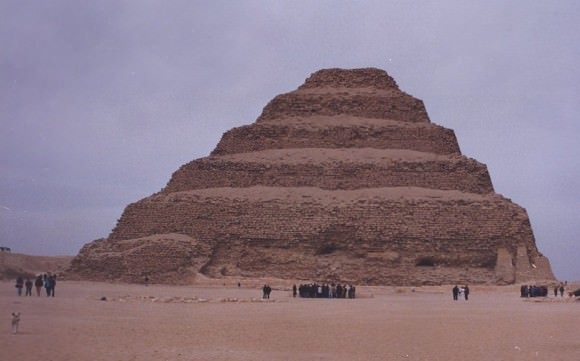
The Djoser step pyramid outside of Cairo. Image credit: Dave Dickinson
But that does add up over time. German historian Eduard Meyer first described the Sothic Cycle in 1904, and tablets mention its use as a calendar back to 2781 BC. And just over 3 Sothic periods later (note that 1460= 365.25 x 4, which is the number of Julian years equal to 1461 Sothic years, as the two cycles ‘sync up’), and the flooding of the Nile now no longer quite coincides with the first sighting of Sirius.
Such a simultaneous sighting with the sunrise is known in astronomy as a heliacal rising. Remember that atmospheric extinction plays a role sighting Sirius in the swampy air mass of the atmosphere low to the horizon, taking its usual brilliant luster of magnitude -1.46 down to a more than a full magnitude and diminishing its intensity over 2.5 times.
This year, we transposed the seasonal predicted ‘first sightings’ of Sirius versus latitude onto a map of North America:
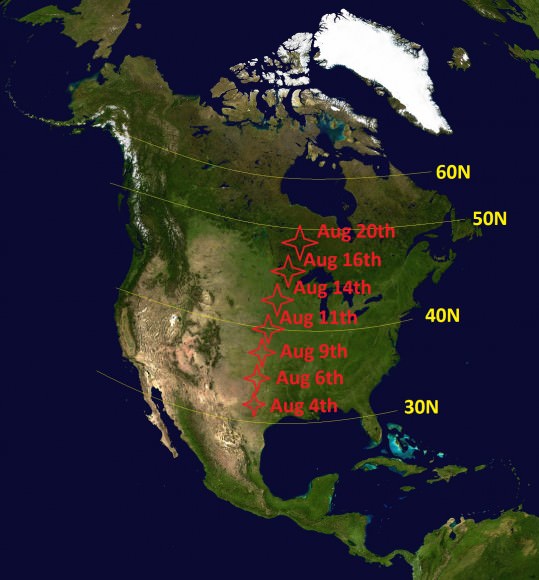
Optimal sighting dates for the heliacal rising of Sirius by latitude. Image credit: Dave Dickinson, adapted from data by Ed Kotapish.
Another factor that has skewed the date of first ‘Sirius-sign’ is the apparent motion of the star itself. At 8.6 light years distant, Sirius appears to move 1.3 arc seconds per year. That’s not much, but over the span of one Sothic cycle, that amounts up to 31.6’, just larger than the average diameter of a Full Moon.
Sirius has been the star of legends and lore as well, not the least of which is the curious case of the Dogon people of Mali and their supposed privileged knowledge of its white dwarf companion star. Alvan Graham Clark and his father discovered Sirius B in 1862 as they tested out their shiny new 18.5-inch refractor. And speaking of Sirius B, keep a telescopic eye on the Dog Star, as the best chances to spy Sirius B peeking out from the glare of its primary are coming right up around 2020.
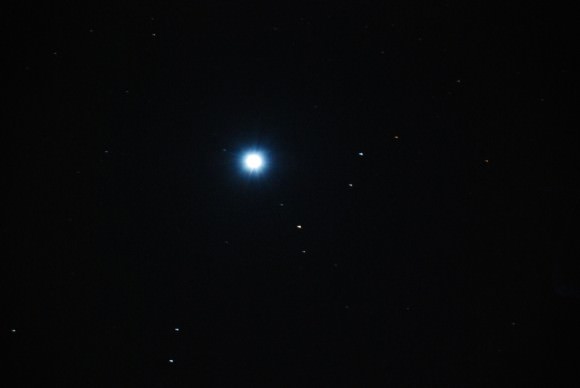
The dazzling visage of Sirius. Image credit: Dave Dickinson
Repeating the visual feat of spying Sirius B low in the dawn can give you an appreciation as to the astronomical skill of ancient cultures. They not only realized the first sighting of Sirius in the dawn skies coincided with the annual Nile flooding, but they identified the discrepancy between the Sothic and sidereal year, to boot. Not bad, using nothing but naked eye observations. Such ability must have almost seemed magical to the ancients, as if the stars had laid out a celestial edge for the Egyptians to exploit.
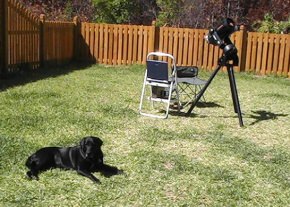
Man’s best (observing) friend… Image credit: Dave Dickinson
You can also exploit one method of teasing out Sirius from the dawn sky a bit early that wasn’t available to those Egyptian astronomer priests: using a pair of binoculars to sweep the skies. Can you nab Sirius with a telescope and track it up into the daytime skies? Sirius is just bright enough to see in the daytime against a clear blue sky with good transparency if you know exactly where to look for it.
Let the Dog Days of 2015 begin!
http://www.universetoday.com/121608/the-dog-days-and-sothic-cycles-of-august/
|
|
|
|
|

The month of August is upon us once again, bringing with it humid days and sultry nights for North American observers.
You’ll often hear the first few weeks of August referred to as the Dog Days of Summer. Certainly, the oppressive midday heat may make you feel like lounging around in the shade like our canine companions. But did you know there is an astronomical tie-in for the Dog Days as well?
We’ve written extensively about the Dog Days of Summer previously, and how the 1460 year long Sothic Cycle of the ancient Egyptians became attributed to the Greek adoption of Sothis, and later in medieval times to the ‘Dog Star’ Sirius. Like the Blue Moon, say something wrong enough, long enough, and it successfully sticks and enters into meme-bank of popular culture.

Sirius (to the lower right) along with The Moon, Venus and Mercury and a forest fire taken on July 22, 2014. (Note- this was shot from the Coral Towers Observatory in the southern hemisphere). Image credit and copyright: Joseph Brimacombe
A water monopoly empire, the Egyptians livelihood rested on knowing when the annual flooding of the Nile was about to occur. To this end, they relied on the first seasonal spotting of Sirius at dawn. Sirius is the brightest star in the sky, and you can just pick out the flicker of Sirius in early August low to the southeast if you know exactly where to look for it.

Sundown over Cairo during the annual flooding of the Nile river. Image Credit: Travels through the Crimea, Turkey and Egypt 1825-28 (Public Domain).
Sirius lies at a declination of just under 17 degrees south of the celestial equator. It’s interesting to note that in modern times, the annual flooding of the Nile (prior to the completion of the Aswan Dam in 1970) is commemorated as occurring right around August 15th. Why the discrepancy? Part of it is due to the 26,000 year wobbling of the Earth’s axis known as the Precession of the Equinoxes; also, the Sothic calendar had no intercalculary or embolismic (think leap days) to keep a Sothic year in sync with the sidereal year. The Sothic cycle from one average first sighting of Sirius to another is 365.25 days, and just 9 minutes and 8 seconds short of a sidereal year.

The Djoser step pyramid outside of Cairo. Image credit: Dave Dickinson
But that does add up over time. German historian Eduard Meyer first described the Sothic Cycle in 1904, and tablets mention its use as a calendar back to 2781 BC. And just over 3 Sothic periods later (note that 1460= 365.25 x 4, which is the number of Julian years equal to 1461 Sothic years, as the two cycles ‘sync up’), and the flooding of the Nile now no longer quite coincides with the first sighting of Sirius.
Such a simultaneous sighting with the sunrise is known in astronomy as a heliacal rising. Remember that atmospheric extinction plays a role sighting Sirius in the swampy air mass of the atmosphere low to the horizon, taking its usual brilliant luster of magnitude -1.46 down to a more than a full magnitude and diminishing its intensity over 2.5 times.
This year, we transposed the seasonal predicted ‘first sightings’ of Sirius versus latitude onto a map of North America:

Optimal sighting dates for the heliacal rising of Sirius by latitude. Image credit: Dave Dickinson, adapted from data by Ed Kotapish.
Another factor that has skewed the date of first ‘Sirius-sign’ is the apparent motion of the star itself. At 8.6 light years distant, Sirius appears to move 1.3 arc seconds per year. That’s not much, but over the span of one Sothic cycle, that amounts up to 31.6’, just larger than the average diameter of a Full Moon.
Sirius has been the star of legends and lore as well, not the least of which is the curious case of the Dogon people of Mali and their supposed privileged knowledge of its white dwarf companion star. Alvan Graham Clark and his father discovered Sirius B in 1862 as they tested out their shiny new 18.5-inch refractor. And speaking of Sirius B, keep a telescopic eye on the Dog Star, as the best chances to spy Sirius B peeking out from the glare of its primary are coming right up around 2020.

The dazzling visage of Sirius. Image credit: Dave Dickinson
Repeating the visual feat of spying Sirius B low in the dawn can give you an appreciation as to the astronomical skill of ancient cultures. They not only realized the first sighting of Sirius in the dawn skies coincided with the annual Nile flooding, but they identified the discrepancy between the Sothic and sidereal year, to boot. Not bad, using nothing but naked eye observations. Such ability must have almost seemed magical to the ancients, as if the stars had laid out a celestial edge for the Egyptians to exploit.

Man’s best (observing) friend… Image credit: Dave Dickinson
You can also exploit one method of teasing out Sirius from the dawn sky a bit early that wasn’t available to those Egyptian astronomer priests: using a pair of binoculars to sweep the skies. Can you nab Sirius with a telescope and track it up into the daytime skies? Sirius is just bright enough to see in the daytime against a clear blue sky with good transparency if you know exactly where to look for it.
Let the Dog Days of 2015 begin!
http://www.universetoday.com/121608/the-dog-days-and-sothic-cycles-of-august/
|
|
|
|
|
LA TORRE DE BABEL, OSEA LA UNION ENTRE EL CIELO Y LA TIERRA, ES UN "AGUJERO DE GUSANO". EN ESTE MARCO ES EL GRIAL MISMO. SIMBOLIZA LA UNION ENTRE EL CIELO Y LA TIERRA, O LA CUADRATURA DEL CIRCULO (CIRCULO=CIELO; CUADRADO=TIERRA) O LA ESCUADRA Y EL COMPAS MASONICO. ES OBVIA LA CONNOTACION CON LA "ESCALERA DE JACOB". MAGDALENA TIENE CONNOTACION CON EL MISMO TERMINO TORRE EN HEBREO.
1. Josué 15:37 Zenán, HADASA, Migdal-gad,
2. Ester 2:7 Y había criado a HADASA, es decir, Ester, hija de su tío, porque era húerfana; y la joven era de hermosa figura y de buen parecer. Cuando su padre y su madre murieron, Mardoqueo la adoptó como hija suya.
ESTHER=ISHTAR=STAR GATE=PUERTA ESTELAR
BABEL=PUERTA DE DIOS

1 Pedro 5:13: La iglesia que está en Babilonia, elegida juntamente con vosotros, y Marcos mi HIJO, os saludan.
HECHOS 12:12 / 33 / JUAN MARCOS
ESTRELLA DE 6 PUNTAS = 33 = 2 TRIANGULOS CRUZADOS =ALQUIMIA
BABILONIA ESTABA EN EL PARALELO 33 Y ERA UNA CIUDAD DE 7 COLINAS.
BABEL/ BABY / BEBE /
| milky way in Simple Gematria Equals: 119 |
( |
m 13 |
i9 |
l 12 |
k 11 |
y 25 |
0 |
w 23 |
a1 |
y 25 |
) |
| queen mary in Simple Gematria Equals: 119 |
( |
q 17 |
u 21 |
e5 |
e5 |
n 14 |
0 |
m 13 |
a1 |
r 18 |
y 25 |
|
| hebrew calendar in Simple Gematria Equals: 119 |
( |
h8 |
e5 |
b2 |
r 18 |
e5 |
w 23 |
0 |
c3 |
a1 |
l 12 |
e5 |
n 14 |
d4 |
a1 |
r 18 |
| mary magdalene in Simple Gematria Equals: 119 |
( |
m 13 |
a1 |
r 18 |
y 25 |
0 |
m 13 |
a1 |
g7 |
d4 |
a1 |
l 12 |
e5 |
n 14 |
e5 |
|
|
|
|
|
|
¡¡¡33!!!
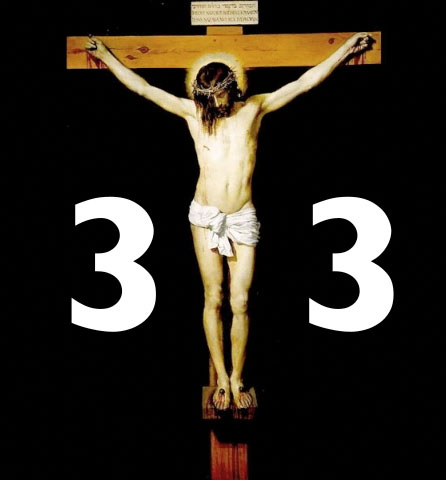
|
|
|
|
|
2. Daniel 2:27 Daniel respondió delante del rey, diciendo: El MISTERIO que el rey demanda, ni sabios, ni astrólogos, ni magos ni adivinos lo pueden revelar al rey.
22/7=3.14= PI-RAMIDE
| Reply |
Message 106 of 106 on the subject |
|
|
MONTE HERMON (TRIBU DE DAN)
DAN-IEL / PARALELO 33
MON / MOON / LUNA / TRANSFIGURACION
|
|
|
|
|
|
|
|
VERSICULO BIBLICO QUE "ANTICIPO" INFERNO, ESCRITO POR DAN BROWN
DAN BROWN= SERPIENTE= "AGUJERO DE GUSANO"
NOTEN EL NEXO DE DAN, CON LA SERPIENTE (VENECIA) Y EL CABALLO (PLAZA SAN MARCOS)
7. Génesis 49:17 Será Dan SERPIENTE junto al camino, Víbora junto a la senda, Que muerde los talones del caballo, Y hace caer hacia atrás al jinete.
|
|
7. Mateo 23:33 ¡Serpientes, generación de víboras! ¿Cómo escaparéis de la condenación del INFIERNO?
|
|
|
|
|
|
 Primeira Primeira
 Anterior
66 a 80 de 95
Seguinte Anterior
66 a 80 de 95
Seguinte Última
Última
|

